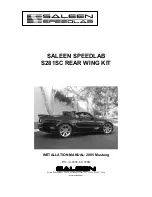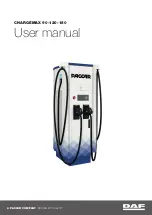
If you’ll be pulling a trailer that, when loaded, will weigh
more than 2,000 lbs (900 kg), be sure to use a
properly mounted, weight-distributing hitch and sway
control of the proper size. This equipment is very
important for proper vehicle loading and good handling
when you’re driving. You should always use a sway
control if your trailer will weigh more than these limits.
You can ask a hitch dealer about sway controls.
Will you have to make any holes in the body of your
vehicle when you install a trailer hitch?
If you’re using the wiring provided with the
factory-installed trailering package, you should not
need to make any holes in the body of your vehicle.
However, if you have an aftermarket hitch installed,
you may need to make holes in the body.
If you do, then be sure to seal the holes later when
you remove the hitch. If you don’t seal them, deadly
carbon monoxide (CO) from your exhaust can get into
your vehicle as well as dirt and water. See “Carbon
Monoxide” under Engine Exhaust on page 2-26.
Safety Chains
You should always attach chains between your vehicle
and your trailer. Cross the safety chains under the
tongue of the trailer to help prevent the tongue from
contacting the road if it becomes separated from the
hitch. Instructions about safety chains may be provided
by the hitch manufacturer or by the trailer manufacturer.
Follow the manufacturer’s recommendation for attaching
safety chains and do not attach them to the bumper.
Always leave just enough slack so you can turn with your
rig. Never allow safety chains to drag on the ground.
Trailer Brakes
If your trailer weighs more than 1,000 lbs (450 kg)
loaded, then it needs its own brakes — and they must
be adequate. Be sure to read and follow the instructions
for the trailer brakes so you’ll be able to install, adjust
and maintain them properly.
Your trailer brake system can tap into your vehicle’s
hydraulic brake system, except:
•
Don’t tap into your vehicle’s brake system if
the trailer’s brake system will use more than
0.02 cubic inch (0.3 cc) of fluid from your vehicle’s
master cylinder. If it does, both braking systems
won’t work well. You could even lose your brakes.
•
Will the trailer parts take 3,000 psi (20 650 kPa)
of pressure? If not, the trailer brake system must
not be used with your vehicle.
•
If everything checks out this far, then make the
brake fluid tap at the port on the master cylinder that
sends fluid to the rear brakes. But don’t use
copper tubing for this. If you do, it will bend and
finally break off. Use steel brake tubing.
4-40
Summary of Contents for 2005 Astro
Page 5: ...These are some examples of symbols that may be found on the vehicle v ...
Page 6: ... NOTES vi ...
Page 26: ...Put someone on it Get it up to speed Then stop the vehicle The rider does not stop 1 20 ...
Page 78: ... NOTES 1 72 ...
Page 119: ... NOTES 3 3 ...
Page 120: ...Instrument Panel Overview 3 4 ...
Page 212: ... NOTES 4 46 ...
Page 224: ...Engine Compartment Overview When you open the hood you will see the following 5 12 ...
Page 346: ...Maintenance Record cont d Date Odometer Reading Serviced By Maintenance Record 6 32 ...
Page 347: ...Maintenance Record cont d Date Odometer Reading Serviced By Maintenance Record 6 33 ...
Page 348: ...Maintenance Record cont d Date Odometer Reading Serviced By Maintenance Record 6 34 ...
Page 362: ... NOTES 7 14 ...
















































